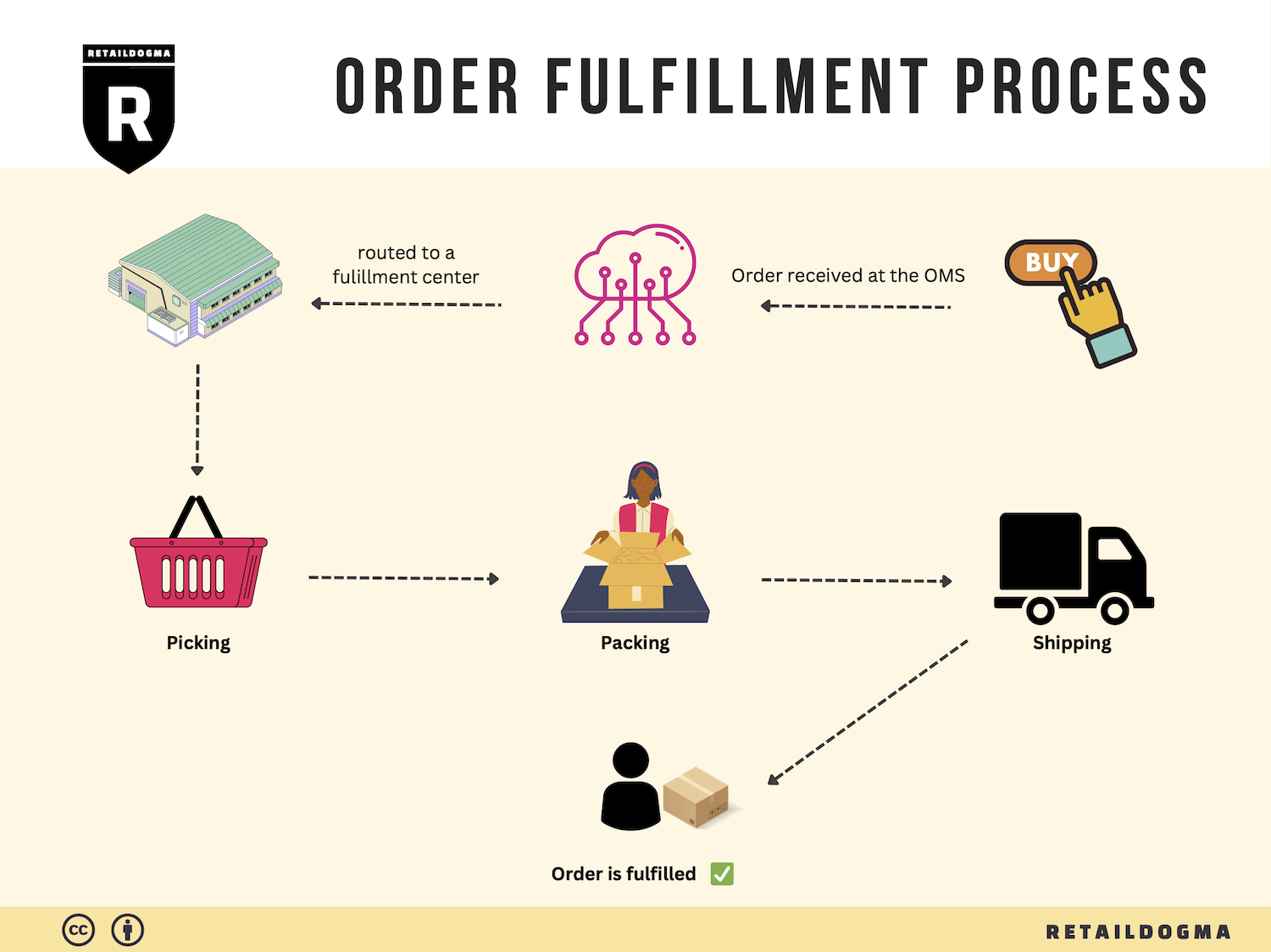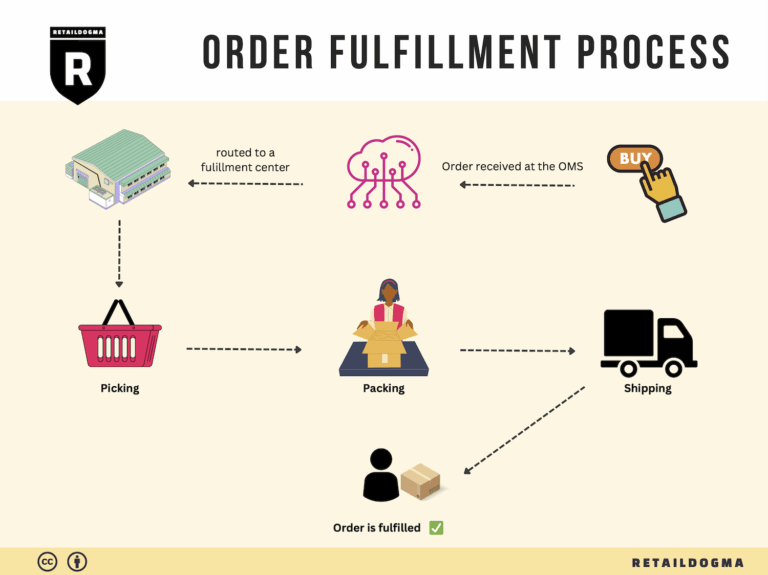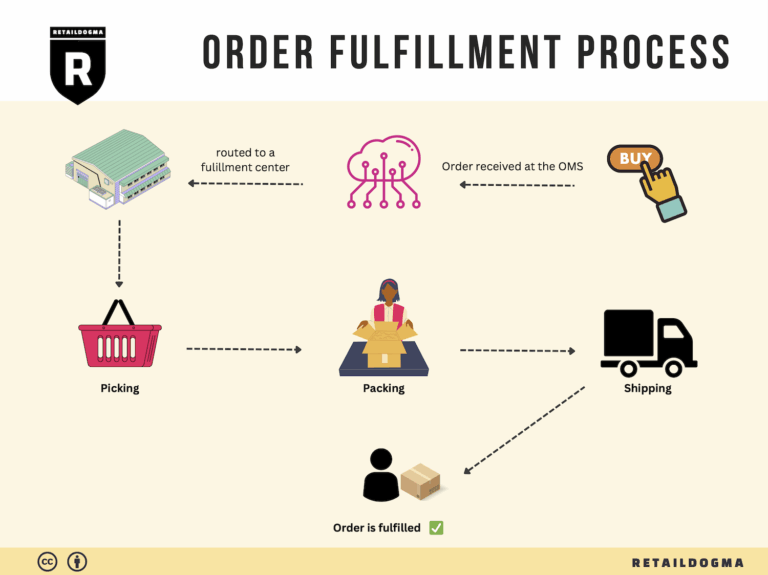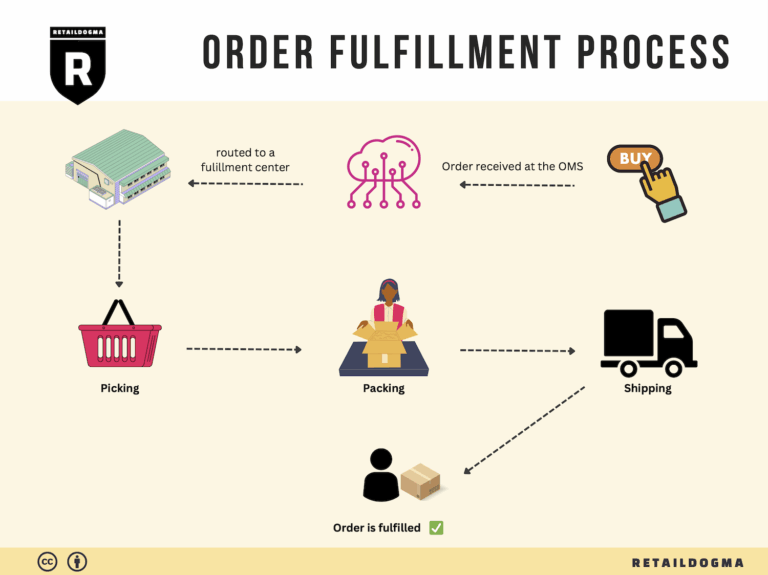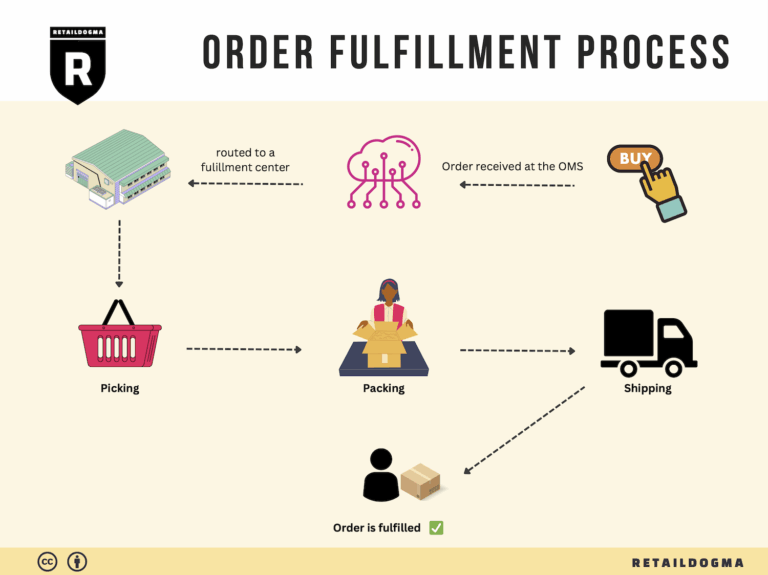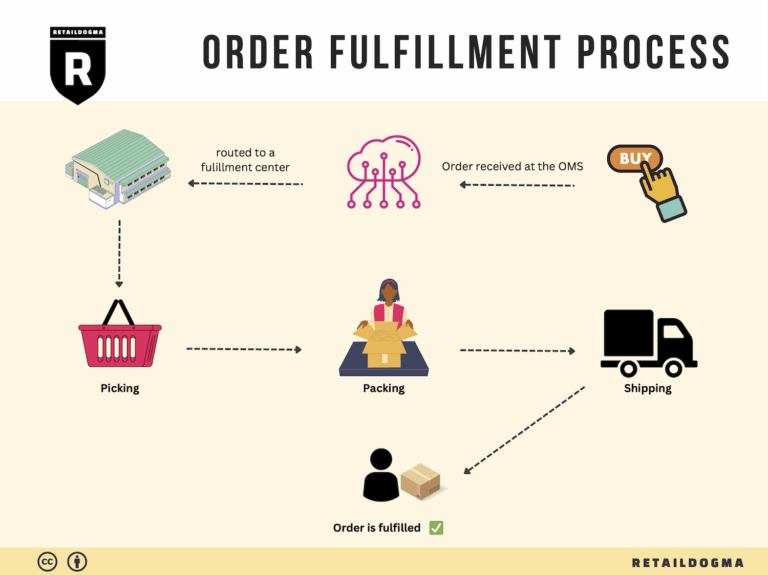Ecommerce Fulfillment Services: The Ultimate Guide (2025)
What is E-commerce Fulfillment? An Introduction for Growing Businesses
Understanding E-commerce Fulfillment: A Vital Component for Growth
As an e-commerce business owner, you might find yourself grappling with the overwhelming tasks of packing and shipping orders. The excitement of growing your sales can quickly turn into stress when faced with the logistical challenges of fulfilling customer orders efficiently. This is where e-commerce fulfillment comes into play—it is the backbone of your business operations, encompassing the entire process of getting a product into the hands of your customers, from inventory management to the final delivery.
E-commerce fulfillment is not just about shipping; it involves a series of critical steps, including receiving inventory, storing products, picking and packing orders, and managing returns. With the right fulfillment strategy, you can streamline these processes, improve customer satisfaction, and ultimately scale your business more effectively.
In this guide, we will explore the different fulfillment models available to growing businesses. For instance, you might consider partnering with a Third-Party Logistics (3PL) provider, which can handle the logistics for you, or utilize Fulfillment by Amazon (FBA), a service that allows you to leverage Amazon’s vast network for storage and shipping. Each model has its own advantages and challenges, and understanding these will help you make informed decisions.
We will also delve into the core services offered by fulfillment partners. These may include inventory management, order processing, shipping logistics, and customer service support. Knowing what services are available will allow you to tailor your fulfillment strategy to fit your unique business needs.
Choosing the right fulfillment partner is crucial to your success. We’ll provide practical tips on how to assess potential partners based on their capabilities, reliability, and pricing structures. Understanding the costs associated with different fulfillment options will empower you to budget effectively and maximize your profit margins.
Ultimately, this guide aims to empower your business by providing the insights needed to make smart, strategic decisions about your logistics. As you navigate the complexities of e-commerce fulfillment, remember that a well-structured fulfillment process is not merely an operational necessity; it is a strategic advantage that can set you apart in a competitive marketplace.
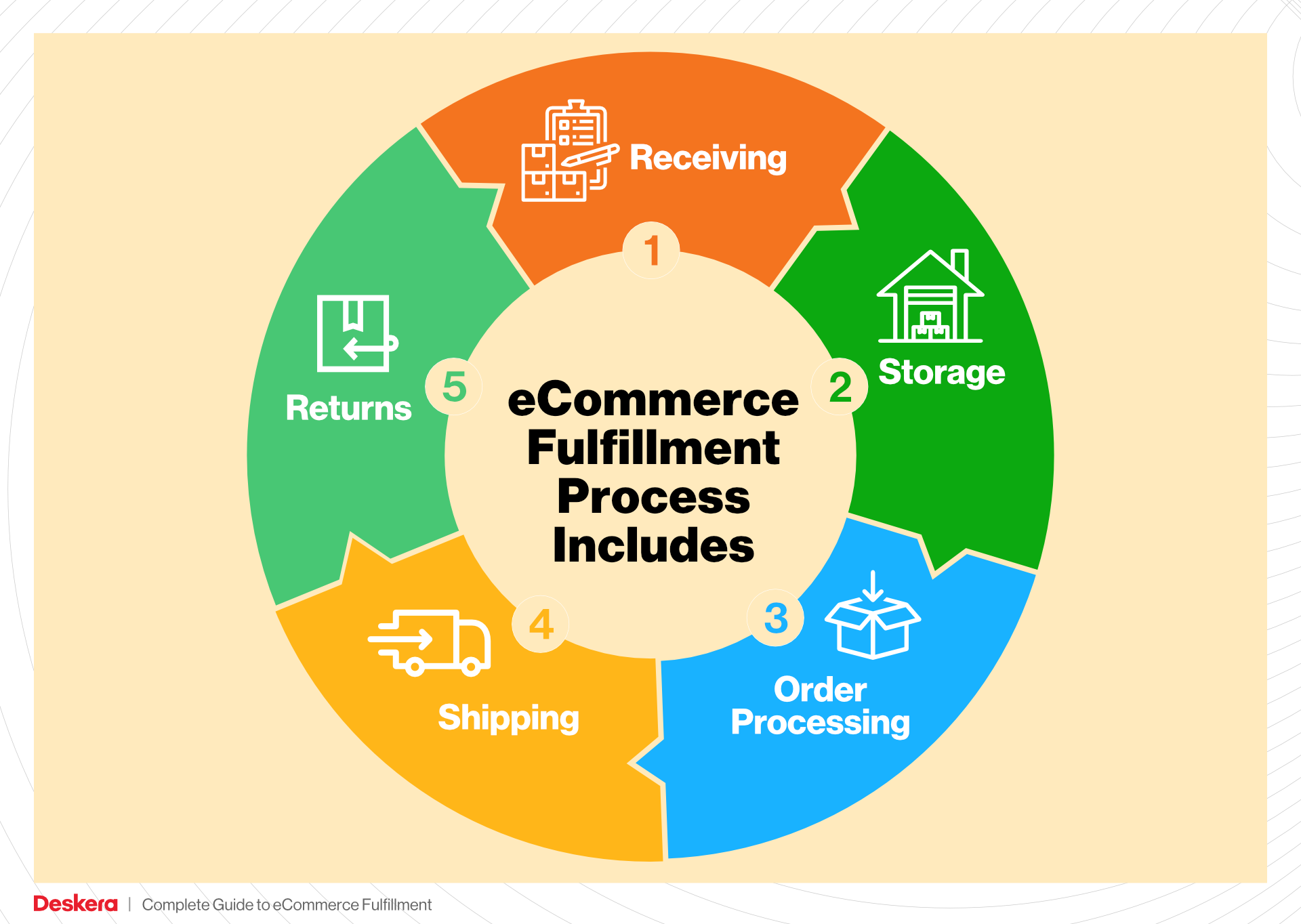
What You’ll Learn In This Guide
- What is E-commerce Fulfillment? An Introduction for Growing Businesses
- The Order Fulfillment Process: From ‘Buy’ Button to Customer’s Door
- Comparing Fulfillment Models: In-House vs. 3PL vs. Dropshipping
- A Deep Dive into Amazon FBA: Pros, Cons, and Who It’s For
- Core Services Offered by Fulfillment Centers
- How to Choose a Fulfillment Partner: A 6-Point Checklist
- Understanding Fulfillment Pricing: A Breakdown of Common Fees
- Frequently Asked Questions (FAQs) about Fulfillment
- Conclusion: Is Outsourcing Fulfillment the Right Move for Your Business?
- Important Disclaimer
The Order Fulfillment Process: From ‘Buy’ Button to Customer’s Door
1. Receiving Inventory
The order fulfillment process begins with receiving inventory at the fulfillment center. This step involves checking the incoming shipments against purchase orders to ensure accuracy in quantities and product specifications. Each item is assigned a Stock Keeping Unit (SKU), a unique identifier that simplifies tracking and management within the warehouse system.
Importance: Accurate receiving is crucial as it sets the foundation for inventory management. Discrepancies at this stage can lead to stockouts or overstock situations, negatively impacting customer satisfaction and operational efficiency. Proper inventory control helps minimize costs associated with excess inventory and storage.
Key Term: SKU (Stock Keeping Unit) – A unique identifier used to track products and manage inventory levels effectively.
2. Warehouse Storage
Once the inventory is received and verified, the next step is warehouse storage. This involves organizing products in designated areas within the fulfillment center. Efficient storage strategies, such as utilizing vertical space and implementing a systematic layout (e.g., ABC analysis), help optimize space and facilitate easy access to products.
Importance: Proper storage is vital for maintaining an organized warehouse and ensuring quick retrieval of items during order fulfillment. An efficient storage system reduces the time and labor costs associated with picking orders, ultimately improving overall productivity.
Key Term: ABC Analysis – A categorization method that ranks inventory based on importance and value, guiding storage decisions to optimize space and retrieval efficiency.
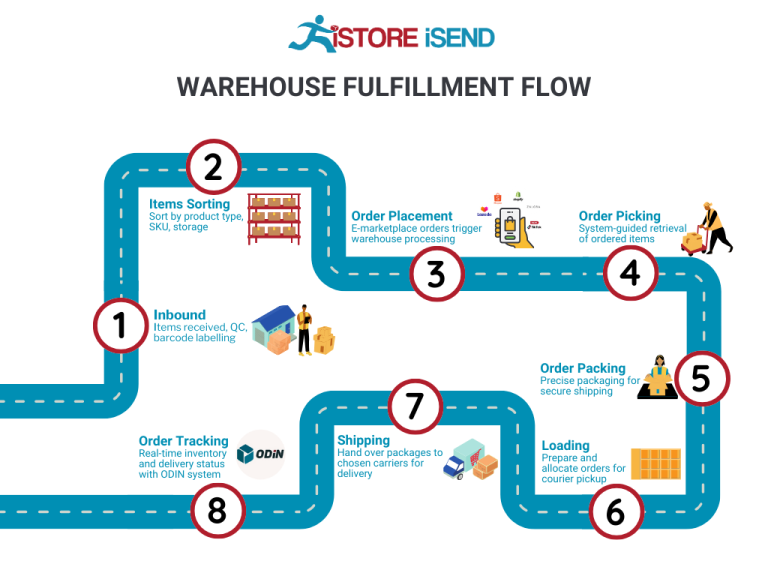
3. Order Picking
When a customer places an order, the fulfillment center moves to the order picking stage. This process involves selecting the correct items from storage based on a pick list generated by the order management system. The pick list details the items, quantities, and locations within the warehouse, enabling staff to efficiently gather products.
Importance: Effective order picking is critical for ensuring that customers receive the correct items in a timely manner. Errors during this stage can lead to returns, dissatisfaction, and increased operational costs. Streamlined picking processes, such as batch picking or wave picking, can enhance efficiency and accuracy.
Key Term: Pick List – A document or digital tool that outlines the items and quantities required for each order, guiding warehouse personnel in the picking process.
4. Order Packing
After items are picked, the next phase is order packing. In this step, products are carefully packaged for shipment. This involves selecting appropriate packing materials, ensuring items are secured to prevent damage, and including necessary documentation (e.g., packing slips, invoices).
Importance: Proper packing is essential to protect products during transit and to provide a positive unboxing experience for customers. It also plays a role in reducing returns due to damages. Additionally, efficient packing can lead to lower shipping costs by minimizing package size and weight.
Key Term: Packing Slip – A document included in the package that lists the items contained within, serving as a confirmation for the customer and as a reference for returns.
5. Shipping & Delivery
The final step in the order fulfillment process is shipping and delivery. Once the orders are packed, they are labeled and prepared for shipment. Fulfillment centers typically partner with various carriers to provide multiple shipping options, which can include standard, expedited, or same-day delivery services.
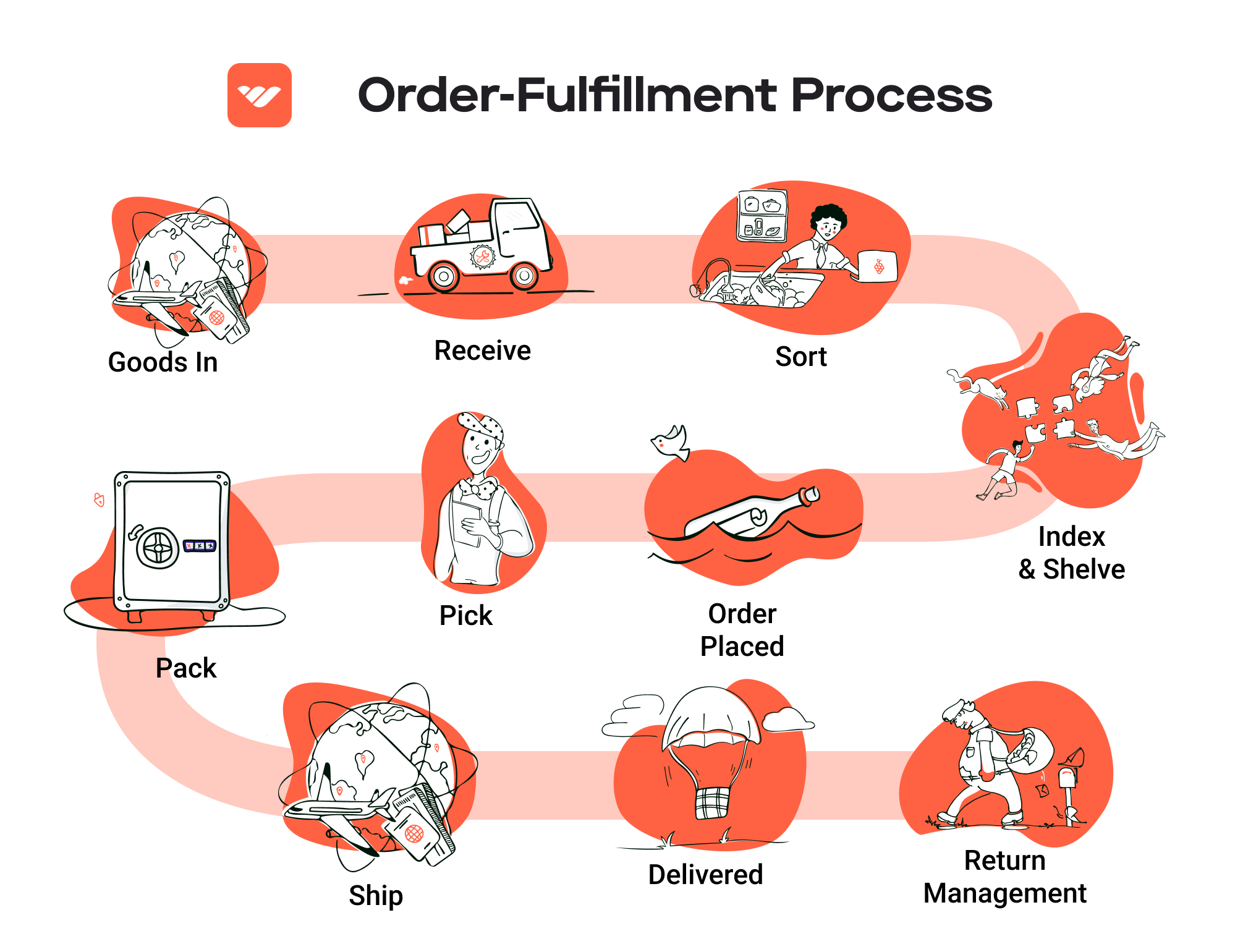
Importance: Timely shipping is a key factor in customer satisfaction. The speed and reliability of delivery can significantly impact a customer’s perception of a brand. Additionally, effective tracking systems allow customers to monitor their orders in real time, enhancing transparency and trust.
Key Term: Tracking Number – A unique identifier assigned to a shipment that allows both the seller and customer to monitor the progress and status of the delivery.
By understanding and optimizing each of these five steps in the order fulfillment process, e-commerce businesses can enhance efficiency, reduce costs, and improve customer satisfaction, ultimately leading to a more scalable operation.
Comparing Fulfillment Models: In-House vs. 3PL vs. Dropshipping
Fulfillment Model Comparison
| Model | Who Handles Inventory | Best For (Business Stage) | Key Advantage | Key Disadvantage |
|---|---|---|---|---|
| In-House Fulfillment | The business itself | Startups to medium-sized | Full control over inventory and branding | High operational costs and overhead |
| Third-Party Logistics (3PL) | Third-party providers | Growing and established businesses | Scalability and reduced labor costs | Less control over inventory and processes |
| Dropshipping | Supplier/manufacturer | New e-commerce businesses | Low upfront investment and risk | Lower profit margins and potential quality control issues |
In-House Fulfillment
In-house fulfillment involves managing the entire inventory and shipping process within your own business. This model is typically favored by startups and medium-sized businesses that want to maintain full control over their products, branding, and customer experience. By handling inventory directly, companies can tailor their processes, optimize storage, and ensure quality control. Furthermore, owning the fulfillment process allows for quicker response times to customer inquiries and changes in inventory, which can enhance customer satisfaction. However, this model comes with significant disadvantages, including high operational costs related to labor, warehousing, and logistics management. As the business grows, these costs can become burdensome, making it necessary to reconsider the fulfillment strategy to maintain profitability.
Third-Party Logistics (3PL)
Third-party logistics (3PL) services offer a flexible solution for businesses that are scaling and require efficient inventory management without the overhead of in-house fulfillment. In this model, a third-party provider manages storage, picking, packing, and shipping on behalf of the business. This can be particularly beneficial for growing and established companies that have fluctuating inventory levels or seasonal demands. The key advantage of using a 3PL is the ability to scale operations quickly; businesses can adjust their logistics needs without the need for significant capital investment in infrastructure. Additionally, 3PLs often have established relationships with carriers, which can lead to reduced shipping costs. However, the downside is that businesses may lose some control over inventory and customer service, as they rely on an external partner to handle critical aspects of fulfillment. This can lead to inconsistencies in brand experience if the 3PL does not align with the company’s standards.
Dropshipping
Dropshipping is a fulfillment model where the retailer does not keep the products in stock but instead transfers customer orders directly to a supplier, who then ships the products to the customer. This model is particularly appealing to new e-commerce businesses because it requires minimal upfront investment and allows for a wide product range without the risks associated with unsold inventory. The primary advantage of dropshipping is the low barrier to entry; entrepreneurs can start an online store without significant capital tied up in inventory. However, dropshipping does present challenges, such as lower profit margins compared to other fulfillment methods and potential quality control issues, as the retailer relies on suppliers for product quality and delivery. Additionally, shipping times can be longer, especially if suppliers are located overseas, which may impact customer satisfaction. As businesses grow, they may find that the dropshipping model limits their ability to build a strong brand identity and customer loyalty due to the lack of direct control over the product and fulfillment process.
Conclusion
Choosing the right fulfillment model is crucial for e-commerce businesses looking to scale effectively. In-house fulfillment provides control but at a higher cost, while 3PL offers scalability with some loss of control. Dropshipping presents a low-risk entry point but can lead to challenges in profitability and quality assurance. Each model has its merits and drawbacks, and the best choice will depend on the unique needs and growth trajectory of the business.
A Deep Dive into Amazon FBA: Pros, Cons, and Who It’s For
Understanding Fulfillment by Amazon (FBA)
Fulfillment by Amazon (FBA) is a service offered by Amazon that allows sellers to store their products in Amazon’s fulfillment centers. Amazon takes care of storage, packaging, and shipping on behalf of the sellers. This service is particularly appealing for e-commerce businesses looking to scale their operations without the overhead of managing logistics.
When a customer places an order for a product fulfilled by FBA, Amazon handles the entire fulfillment process, including customer service and returns. This allows sellers to focus on other aspects of their business, such as product development and marketing.
How FBA Works
-
Setup: Sellers create an Amazon Seller account and enroll in the FBA program. They then list their products on Amazon and prepare them for shipment to Amazon’s fulfillment centers.
-
Inventory Management: Sellers send their inventory to Amazon. Once received, Amazon takes care of the storage, organizing products in their warehouses.
-
Order Processing: When a customer orders a product, Amazon picks, packs, and ships the item on behalf of the seller. The seller is notified of the sale and can track inventory levels through the Amazon Seller Central dashboard.
-
Customer Service: Amazon manages customer service inquiries and returns for FBA orders, providing customers with the reassurance of Amazon’s trusted service.
-
Payment: Sellers receive payments for their sales after deducting Amazon’s fees, which vary based on the product category and other factors.
Pros of FBA
1. Prime Eligibility
Products fulfilled through FBA are eligible for Amazon Prime, which can significantly boost sales. Prime members enjoy free two-day shipping, making FBA products more appealing to a vast audience.
2. Customer Trust
Amazon is a trusted brand, and customers often prefer buying from sellers who use FBA. The assurance of Amazon’s reliable shipping and customer service can lead to higher conversion rates.
3. Multi-Channel Fulfillment
FBA can be used not only for Amazon sales but also for orders from other sales channels. Sellers can use Amazon’s fulfillment network to ship products sold on their own websites or other platforms, streamlining their logistics.
4. Scalability
FBA allows sellers to scale their operations without the need for additional warehousing or staff. As sales grow, businesses can easily increase their inventory and rely on Amazon’s infrastructure to handle the logistics.
5. Simplified Operations
By outsourcing fulfillment to Amazon, sellers can focus on strategic aspects of their business rather than day-to-day logistics. This can lead to better resource allocation and overall efficiency.
Cons of FBA
1. High Fees
FBA fees can be substantial, including storage fees and fulfillment fees. These costs vary based on the size and weight of the products and can eat into profit margins if not carefully managed.
2. Strict Inventory Rules
Amazon has specific guidelines regarding inventory management, including restrictions on certain products and the requirement to maintain stock levels. Non-compliance can lead to penalties or even suspension from the platform.
3. Commingling Risks
FBA often involves commingling inventory, meaning that sellers’ products may be stored alongside those of other sellers. This can lead to issues such as receiving returns for products that are not yours or dealing with counterfeit goods.
4. Limited Control Over Shipping
While Amazon handles logistics, sellers have limited control over shipping times and methods once the product leaves the fulfillment center. This can be a concern for businesses wanting to maintain a specific brand experience.
5. Dependency on Amazon
Relying on FBA can create a dependency on Amazon’s platform, making businesses vulnerable to policy changes, fee increases, or account suspensions.
Who is FBA Best For?
Fulfillment by Amazon is ideally suited for:
-
Small to Medium-Sized Businesses: Those looking to expand their reach without the burden of managing logistics can benefit significantly from FBA.
-
Startups: New businesses that want to quickly establish an online presence and leverage Amazon’s customer base will find FBA advantageous.
-
Sellers with High Sales Volume: Businesses that already have a steady stream of sales can utilize FBA to streamline fulfillment and enhance customer satisfaction.
-
Brands Seeking Trust: Businesses that want to leverage Amazon’s reputation for reliability and customer service can gain a competitive edge through FBA.
-
Multi-Channel Sellers: Companies selling across various platforms can benefit from the efficiency of Amazon’s fulfillment network, simplifying their logistics.
In conclusion, while Fulfillment by Amazon offers numerous advantages, such as increased visibility and simplified operations, it is essential for sellers to weigh these against the potential downsides, including fees and control issues. For many e-commerce businesses, particularly those looking to scale quickly, FBA can be a powerful tool in their logistics arsenal.
Core Services Offered by Fulfillment Centers
Inventory Management & Warehousing
Fulfillment centers provide robust inventory management and warehousing services essential for e-commerce businesses. These centers utilize advanced inventory management systems that track stock levels in real time, enabling businesses to maintain optimal inventory levels. By centralizing inventory in a fulfillment center, businesses can reduce overhead costs associated with maintaining multiple storage locations.
Benefits:
-
Real-Time Visibility: Businesses gain access to real-time data regarding stock levels, which aids in making informed purchasing decisions and reduces the risk of stockouts or overstocking.
-
Cost Efficiency: By outsourcing warehousing needs, e-commerce businesses can save on costs related to leasing storage space, utilities, and maintaining warehouse staff.
-
Scalability: As sales volumes fluctuate, fulfillment centers offer the flexibility to scale operations up or down without the financial burden of fixed costs associated with owned warehousing.
-
Improved Organization: Fulfillment centers utilize sophisticated systems for organizing inventory, which enhances picking efficiency and reduces order processing times.
Pick and Pack Services
Pick and pack services are a core component of fulfillment operations, where items are selected from the warehouse and packaged for shipment to customers. This process involves picking the right products based on customer orders, packing them securely, and preparing them for shipment.
Benefits:
-
Efficiency and Speed: Fulfillment centers employ optimized picking strategies, such as batch picking or zone picking, to streamline the order fulfillment process, significantly reducing the time from order placement to shipment.
-
Accuracy: Automated systems and trained staff minimize errors in order picking, ensuring that customers receive the correct items, which enhances customer satisfaction and reduces return rates.
-
Custom Packaging Solutions: Fulfillment centers often provide tailored packaging options that can enhance branding while also ensuring that products are shipped safely and securely.
-
Focus on Core Business Functions: By outsourcing pick and pack services, e-commerce businesses can focus on their core competencies, such as marketing and product development, instead of the complexities of order fulfillment.
Kitting and Assembly
Kitting and assembly services involve bundling multiple products together into a single package or assembling components into a final product before shipping. This service is particularly valuable for businesses that sell products that are frequently purchased together or that require assembly prior to use.
Benefits:
-
Enhanced Customer Experience: By providing kitted products, businesses can offer customers a convenient solution that saves them time and enhances their shopping experience.
-
Increased Sales Opportunities: Kitting allows businesses to create value-added bundles that can encourage customers to purchase more items at once, thereby increasing average order value.
-
Streamlined Operations: Assembly processes are handled by trained staff in fulfillment centers, which can lead to higher quality and consistency in the final products shipped to customers.
-
Flexibility in Offerings: Businesses can easily create and modify kitting options based on customer demand, seasonal promotions, or new product launches without significant investment in additional infrastructure.
Returns Management (Reverse Logistics)
Returns management, or reverse logistics, is a critical service offered by fulfillment centers that involves handling product returns efficiently. This includes processing returns, restocking items, and managing exchanges or refunds.
Benefits:
-
Improved Customer Retention: A streamlined returns process can enhance customer satisfaction, as shoppers are more likely to purchase from a business that offers hassle-free returns.
-
Cost-Effective Processing: Fulfillment centers are equipped to handle returns efficiently, reducing the costs associated with returns processing, storage, and restocking.
-
Data Insights: By analyzing return data, businesses can gain insights into customer behavior, product quality, and potential areas for improvement in their offerings.
-
Sustainability Practices: Efficient returns management can incorporate sustainable practices, such as refurbishing returned items for resale or recycling materials, contributing to corporate social responsibility goals.
In conclusion, fulfillment centers provide essential services that enhance the operational efficiency of e-commerce businesses. By leveraging inventory management, pick and pack services, kitting and assembly, and returns management, businesses can scale their operations effectively while focusing on growth and customer satisfaction.
How to Choose a Fulfillment Partner: A 6-Point Checklist
Location & Warehouse Network
Importance: The geographic location of a fulfillment partner’s warehouses is critical for ensuring timely deliveries to your customers. A strategically located partner can reduce shipping times and costs, enhancing customer satisfaction.
Questions to Ask:
– Where are your warehouses located, and how do these locations align with my target markets?
– How do you manage shipping routes and costs?
– Do you have a network of warehouses that allows for regional fulfillment?
Technology & Integrations
Importance: A fulfillment partner’s technology stack can significantly impact your operational efficiency. Seamless integrations with your existing e-commerce platforms, inventory management systems, and order processing tools are essential for smooth operations.
Questions to Ask:
– What technology do you use for order management, inventory tracking, and shipping?
– Can your system integrate with my current e-commerce platform (e.g., Shopify, WooCommerce, Amazon)?
– How do you handle data security and compliance with privacy regulations?
Specializations (e.g., Cold Storage, Oversized Items)
Importance: Depending on your product range, you may require a partner with specific capabilities, such as cold storage for perishables or special handling for oversized items. Choosing a partner with the right specializations can prevent potential damage and ensure regulatory compliance.
Questions to Ask:
– What types of products do you specialize in handling?
– Do you have the necessary facilities for specialized products (e.g., temperature control, fragile items)?
– Can you provide case studies or references from clients with similar product needs?
Scalability & Capacity
Importance: As your business grows, your fulfillment needs will change. A good partner should be able to scale operations efficiently to accommodate increasing order volumes without compromising service quality.
Questions to Ask:
– How do you manage capacity during peak seasons or unexpected surges in demand?
– What is your process for scaling operations, and how quickly can you adapt to my business growth?
– Can you provide examples of how you have handled increased demand for other clients?
Pricing and Contracts
Importance: Understanding the pricing structure and contract terms is crucial to avoid unexpected costs that could impact your profitability. Transparency in pricing allows for better budgeting and financial forecasting.
Questions to Ask:
– What pricing model do you use (e.g., per order, per item, monthly fees)?
– Are there any additional fees for services like storage, returns, or special handling?
– Can you provide a detailed breakdown of all costs associated with your services?
Customer Support & Reviews
Importance: Reliable customer support is vital for resolving issues quickly and maintaining operational efficiency. Additionally, researching reviews and testimonials can provide insights into the partner’s reliability and service quality.
Questions to Ask:
– What support channels do you offer (e.g., phone, email, live chat)?
– What are your typical response times for customer inquiries or issues?
– Can you share references or reviews from current or past clients that highlight your service quality?
Conclusion
Choosing the right fulfillment partner is a critical decision for your e-commerce business. By considering these six key factors—location and warehouse network, technology and integrations, specializations, scalability and capacity, pricing and contracts, and customer support and reviews—you can make an informed choice that aligns with your operational needs and growth objectives. Take the time to thoroughly vet potential partners, as the right relationship can significantly enhance your business’s efficiency and customer satisfaction.
Understanding Fulfillment Pricing: A Breakdown of Common Fees
Initial Setup Fees
When partnering with a fulfillment center, the initial setup fee is often the first cost you’ll encounter. This fee typically covers the onboarding process, which may include creating your account, integrating your e-commerce platform, and configuring your inventory management system. The exact amount can vary based on the fulfillment provider and the complexity of your operations.
Some providers might charge a flat fee, while others may base it on the number of SKUs you plan to manage. It’s essential to review what services are included in the setup fee, as additional services like training or custom integration may incur extra costs.
Receiving Fees
Receiving fees are charged whenever your inventory arrives at the fulfillment center. This fee compensates the warehouse for the labor involved in unloading shipments, inspecting items for damage, and entering products into the inventory management system.
Typically, these fees are calculated per pallet or per unit. For example, if you send a large shipment of 100 pallets, you may be charged a per-pallet fee that can range from $15 to $50, depending on the complexity of the receiving process. Understanding this fee structure is crucial, as it can significantly impact your overall logistics costs, especially with high-volume shipments.
Storage Fees (per pallet/bin)
Storage fees are incurred for the space your products occupy in the warehouse. These fees can be assessed monthly and are usually calculated on a per-pallet or per-bin basis.
The cost varies significantly based on location, size, and the type of items stored. For example, standard pallets might be charged a monthly fee of $10 to $25, while specialized storage solutions for hazardous materials or climate-controlled environments can be considerably higher. Many fulfillment centers also implement tiered pricing, where the cost per pallet decreases as your storage volume increases, providing an incentive for larger operations.
Pick & Pack Fees (per item/order)
Pick and pack fees are among the most critical components of fulfillment pricing. This fee covers the labor involved in picking items from storage, packing them, and preparing them for shipment.
Fees can be calculated per item or per order, depending on the fulfillment center’s pricing model. A typical pick fee might range from $0.50 to $2.00 per item, while packing fees can add an additional $1.00 to $3.00 per order. Some providers also offer a flat fee for orders that contain multiple items, which can be more economical for businesses with diverse product offerings. Understanding how these fees are structured will help you forecast your fulfillment costs accurately.
Shipping Fees
Shipping fees can vary widely based on the destination, shipping method, package dimensions, and weight. Fulfillment centers often negotiate bulk shipping rates with carriers, which can lead to significant savings for businesses.
Shipping fees may include costs for standard ground shipping, expedited options, and international shipping. It’s essential to know whether these fees are included in your overall fulfillment pricing or charged separately. Many fulfillment centers provide a shipping calculator or a detailed breakdown of shipping costs during the quoting process, helping you gauge how shipping impacts your overall logistics budget.
Tips for Getting an Accurate Quote
-
Detail Your Needs: When requesting a quote, provide comprehensive details about your business, including the types of products you sell, your expected order volume, and any special requirements (e.g., kitting, labeling).
-
Ask About All Fees: Ensure the quote includes all potential costs, such as setup, receiving, storage, pick & pack, and shipping fees. Ask for clarification on any fees that are not explicitly detailed.
-
Negotiate Terms: Don’t hesitate to negotiate terms, especially if you are a high-volume seller. Many fulfillment centers are willing to offer discounts or customized pricing structures based on your projected sales.
-
Request a Trial Period: If possible, negotiate a trial period with the fulfillment center. This allows you to assess their services and fee structures in real-time, ensuring that their pricing aligns with your operational needs.
-
Review Contracts Carefully: Before signing a contract, carefully review the terms and conditions related to pricing. Look for any hidden fees, penalties for early termination, or other variables that could affect your bottom line.
By understanding the various fulfillment pricing models and being diligent in your quoting process, you can optimize your logistics strategy and enhance your e-commerce operations effectively.
Frequently Asked Questions (FAQs) about Fulfillment
1. What is Amazon Fulfillment Center Flex?
Amazon Fulfillment Center Flex is a program that allows independent contractors to deliver packages for Amazon using their own vehicles. This program aims to provide a flexible working schedule for drivers while ensuring efficient delivery services for Amazon customers.
2. How does the Fulfillment by Amazon (FBA) program work?
Fulfillment by Amazon (FBA) is a service where sellers send their products to Amazon’s fulfillment centers. Amazon then handles storage, packaging, shipping, and customer service for these products. Sellers benefit from Amazon’s vast distribution network and customer trust, allowing them to scale their business more effectively.
3. What’s the difference between a warehouse and a fulfillment center?
A warehouse is primarily used for storage of goods, often with minimal handling involved. In contrast, a fulfillment center is designed specifically for processing and shipping orders directly to customers. Fulfillment centers are equipped to manage inventory, pack products, and ship them efficiently, often offering additional services like returns management.
4. What is a Third-Party Logistics (3PL) provider?
A Third-Party Logistics (3PL) provider is a company that offers outsourced logistics services, including warehousing, inventory management, and shipping. Businesses often partner with 3PLs to streamline their supply chain operations, reduce costs, and enhance scalability without investing in their own logistics infrastructure.
5. How much do fulfillment services cost?
Fulfillment service costs vary widely based on factors such as storage fees, picking and packing fees, shipping costs, and additional services like returns processing. Generally, businesses should expect to pay a monthly storage fee per cubic foot, along with a per-order fee that covers picking and packing. It is advisable to obtain quotes from multiple providers to find a service that fits your budget and needs.
6. Can I shift from an Amazon Delivery Station to a Fulfillment Center?
Yes, transitioning from an Amazon Delivery Station to a Fulfillment Center is possible, but it often requires meeting specific criteria set by Amazon. This could include demonstrating consistent performance metrics and compliance with Amazon’s operational standards. Interested individuals should consult Amazon’s official guidelines or community forums for detailed steps.
7. What are the benefits of using Amazon Fulfillment Services for small businesses?
Using Amazon Fulfillment Services allows small businesses to leverage Amazon’s extensive logistics network, enhance customer trust through fast shipping, and reduce the burden of managing inventory and shipping operations. Additionally, businesses can access Amazon’s customer service and returns management, making it easier to scale without overwhelming internal resources.
8. How do I choose the right fulfillment partner for my business?
When selecting a fulfillment partner, consider factors such as service offerings, pricing structure, integration capabilities with your e-commerce platform, shipping speed, and customer service quality. It’s also beneficial to read reviews and seek recommendations from other businesses in your industry to ensure you select a reliable partner.
9. What happens to my inventory if I decide to leave Amazon’s fulfillment program?
If you decide to leave Amazon’s fulfillment program, you will need to arrange for the removal of your inventory from Amazon’s fulfillment centers. This process may involve additional fees for return shipping or disposal of unsold items. It’s essential to plan this transition carefully to minimize losses and ensure a smooth exit.
10. How can I scale my business using Amazon Fulfillment Center Flex?
To scale your business with Amazon Fulfillment Center Flex, consider increasing your delivery capacity by hiring additional drivers or optimizing your delivery routes for efficiency. Additionally, leveraging data analytics to track performance metrics can help you identify areas for improvement, allowing you to enhance service quality and increase order volume effectively.
Conclusion: Is Outsourcing Fulfillment the Right Move for Your Business?
Evaluating the Decision to Outsource Fulfillment
Outsourcing fulfillment can be a game-changer for e-commerce businesses seeking to scale. By leveraging a fulfillment service, companies can save significant time and resources, allowing them to focus on core activities like marketing and product development. This time-saving benefit is particularly crucial for small to medium-sized enterprises that may not have the bandwidth to manage logistics effectively.
In addition to time savings, a fulfillment partner can provide scalability. As your business grows, so do your shipping needs. A reliable fulfillment service can seamlessly adapt to increased order volumes, ensuring that your customers receive their products promptly, regardless of fluctuations in demand. This flexibility is vital in today’s fast-paced e-commerce environment, where customer expectations are higher than ever.
Moreover, outsourcing fulfillment allows businesses to tap into the expertise of seasoned professionals. Fulfillment centers often have advanced technology, optimized processes, and established relationships with carriers, which can lead to improved shipping efficiency and reduced costs. This expertise can prove invaluable, particularly for businesses looking to expand into new markets or enhance their service offerings.
However, the choice of a fulfillment partner is critical. Not all services are created equal, and selecting the right one can greatly impact your operational success. It’s essential to assess potential partners based on their capabilities, reputation, and alignment with your business goals.
To determine if outsourcing fulfillment is the right next step for your business, conduct a thorough audit of your current shipping processes. Evaluate your time, costs, and customer satisfaction levels. This analysis will provide clarity on whether a fulfillment partner can enhance your operational efficiency and support your growth ambitions. Take action today, and explore how outsourcing fulfillment can propel your business to the next level.
Important Disclaimer
⚠️ Important Disclaimer
The information in this guide is for educational purposes. Fulfillment services, pricing, and platform features change frequently. Always conduct your own due diligence and consult with providers directly before making business decisions.
